The Royal Marines Commandos have undergone a pretty remarkable shift in role and public perception over recent decades, one worth taking a closer look at.
Once positioned as Cold War amphibious Arctic warriors, they later found themselves battling insurgents in the deserts of Afghanistan. Today, they are reinventing themselves as a high-tech, forward-deployed force, ready to confront the grey zone challenges of great power competition.
The Falklands Legacy
During the Cold War, the Royal Marines were primarily tasked as an elite amphibious force operating on NATO’s northern flank. 3 Commando Brigade was assigned to reinforce Norway in the event of a Soviet invasion, with annual Arctic warfare training and pre-positioned equipment reflecting this specialism. The commandos honed their skills in extreme conditions, earning a lasting reputation as the UK’s Arctic warfare experts.
Their cold-climate capability proved vital during the 1982 Falklands War. Following Argentina’s invasion of the islands, a British amphibious task force was deployed. With a seaborne assault required to retake the territory, the Royal Marines were central to the operation. 3 Commando Brigade, reinforced by Paratroopers and other units, landed at San Carlos Water and “yomped” across treacherous terrain to Port Stanley.
By 14 June 1982, British forces – led by Royal Marine Major General Jeremy Moore – had recaptured the islands.
The operation, a textbook display of amphibious and mountain warfare, cemented the Marines’ image as fearless shock troops. The green beret became a national symbol of courage, with their motto Per Mare, Per Terram (By Sea, By Land) reinforced in the public mind.
Through the remainder of the Cold War, the Marines remained on high alert in Northern Europe, often operating alongside Dutch Marines in the integrated UK-Netherlands Amphibious Force. Their structure included Arctic warfare cadres and amphibious ships like HMS Fearless and Intrepid, ready to storm a Norwegian beach if needed. Beyond this primary role, they undertook humanitarian missions, internal security operations in Northern Ireland, and of course, spearheaded the Falklands campaign – proving their training for World War III paid dividends in a very different conflict.
The Falklands also showcased the Corps’ capability to allies. American observers noted the grit and professionalism of the British Commandos, reinforcing their standing as elite amphibious troops. While the Cold War ended without the anticipated Arctic clash, the legacy of the Royal Marines as highly deployable, cold-climate amphibious forces would shape their role for years to come.
Iraq and Afghanistan
The fall of the Soviet Union brought new wars in new climates. In 2003, Royal Marines Commandos launched a daring amphibious and airborne assault on the Al-Faw Peninsula during the opening hours of the Iraq War, securing vital oil infrastructure and clearing the route to Basra. Around 2,000 Commandos spearheaded this complex operation, which is now commemorated annually within the United Kingdom Commando Force.
But it was Afghanistan that would most test—and stretch—the force. From 2002 to 2014, they rotated through Helmand Province, exchanging beach assaults for firefights in compounds and irrigation ditches. Viking armoured vehicles replaced landing craft. Desert heat replaced Arctic chill. Yet they adapted, earning a high number of gallantry awards. What is clear is the cost: significant casualties and lasting scars, both physical and mental.
The Future Commando Force
By the mid-2010s, strategic concerns had shifted towards great-power competition and grey zone threats. The Royal Marines were called to modernise, returning to their maritime roots with a 21st-century approach.
Enter the Future Commando Force (FCF) – a radical overhaul to create a lighter, more lethal, and technology-enabled force. Instead of deploying full Commando units en masse, the FCF structure centres around small, versatile strike teams, forward deployed and ready to respond at short notice – for combat, raids, or humanitarian tasks. This reflects a return to their Second World War ethos, now enhanced with modern equipment and special forces integration.
Two core components shape this new vision: Littoral Response Groups (LRGs) and restructured Commando units. The Royal Navy has designated two LRGs – one for the Euro-Atlantic, and one for the Indo-Pacific – each built around amphibious ships and Commando strike teams. 40 and 45 Commando have each been reshaped into four strike companies, which form Littoral Strike Units. These are embarked on ships to provide a persistent, flexible global presence.
Forward-deployed units are described as “special operations capable” – not formally part of UK Special Forces, but trained to conduct complex missions and integrate closely with international partners such as the US Marine Corps, Japan, and Australia. They can switch from disaster relief to boarding an enemy vessel, all within a single deployment cycle. This adaptability fits perfectly within the UK’s broader Integrated Review and global strategy.
Innovation and Integration
Modern Royal Marines are embracing new technologies and closer integration with elite forces. The FCF is not just about structure – it’s about kit. Under the Autonomous Advance Force trials, Marines worked alongside drone swarms and robotic systems that fly, sail, and dive – enhancing their surveillance and logistics capability.
In one such exercise, six heavy-lift drones resupplied Marines during a mock raid, while other autonomous vehicles scouted and attacked simulated positions. The aim: to use machines as force multipliers, not replacements. As Colonel Chris Haw put it, “technology is there to enhance commando excellence, not to replace it.”
Today’s commandos carry quadcopters, night vision, and tablets for fire support. Their gear includes suppressed rifles, surveillance robots, and laser designators. Uniforms have changed too – the MultiCam Commando Uniform 2020 replaces the traditional gear, while insignia harks back to wartime Commando heritage.
Integration with UK Special Forces has deepened. Royal Marines regularly serve with the Special Forces Support Group and contribute personnel to the Special Boat Service. The Vanguard Strike Company concept blurs the line between elite conventional and special operations forces, with commandos training alongside the new Ranger Regiment and supporting broader strategic operations around the globe. In one Arctic trial, Marines launched from a submarine in inflatable boats to raid a notional enemy shore – the kind of mission once reserved for Special Forces alone.
The Commandos Today
Despite modernisation, the Royal Marines have returned to some traditional strengths. Their Arctic warfare expertise is in demand once again, particularly as Russian activity increases in the High North. In 2022, over 1,000 Royal Marines participated in NATO’s Exercise Cold Response, reaffirming their status as the UK’s Arctic experts.
The Littoral Response Groups put Commando strike teams to sea across the globe – modern raiders ready to act at a moment’s notice. They are once again what the public has long imagined them to be: agile, seaborne shock troops, now operating with drones and data support.
Allied confidence in the Royal Marines remains high. American generals praise their adaptability, and British commandos continue to influence US and allied thinking. Whether in Arctic training with Norway or high-end exercises with the US Marines, the Royal Marines remain central to deterrence and cooperation in NATO and the Joint Expeditionary Force.
At home, they enjoy public respect but must continually demonstrate value amid budget scrutiny. The Integrated Review gave them a vote of confidence, highlighting their global deployment role. From drone trials to amphibious readiness, they are now seen as vital to Britain’s future force structure.
A new recruit might train in Norway, deploy in the Pacific, wear VR goggles one day and fire laser-guided missiles the next. Yet, the Commando Spirit – courage, determination, unselfishness, and cheerfulness in adversity – remains the constant. The inscription at the Royal Marines Museum still reads: Per Mare, Per Terram. Perhaps today we should add: “…by air, by data, by drone.”
The Royal Marines have always been ready to adapt and fight – and now, more than ever, they remain the force that Britain looks to when crises arise. From Cold War fjords to the Indo-Pacific littorals, they remain first to understand, first to adapt, and first to fight.


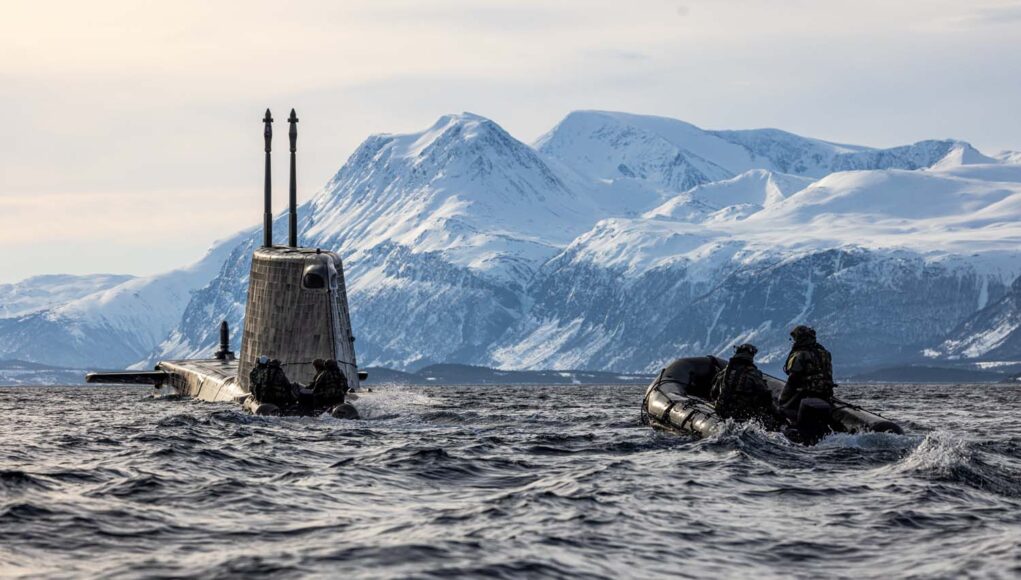
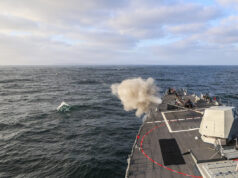
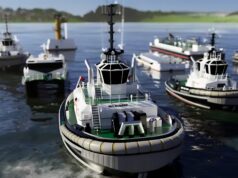
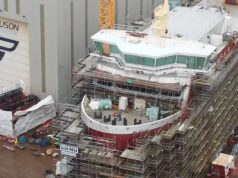
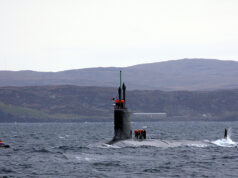
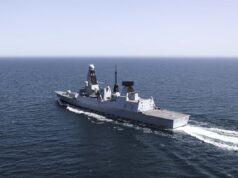

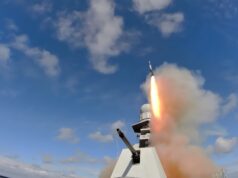
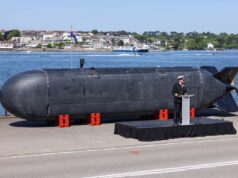
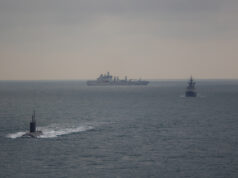
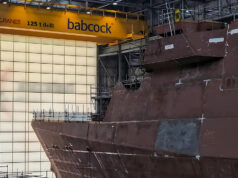

In this evolvement all by design or has some of it been driven by cuts to budget and key enablers?
Mostly window dressing cuts. We need more elite troops like the RM today than ever.
Everybody can earn 250$+ daily… You can earn from 6000-12000 a month or even more if you work as a full time job…It’s easy, just follow instructions on this page, read it carefully from start to finish… It’s a flexible job but a good eaning opportunity..go to this site home tab for more detail thank you…….
HERE→→→→ 𝐖𝐖𝐖.𝐇𝐈𝐆𝐇𝐏𝐑𝐎𝐅𝐈𝐓𝟏.𝐂𝐎𝐌
The numbers in the RM just aren’t there. They have upped intake to 60 something, up form 30 something I nthe 90s, they have crammed another double row in the ending room block. I nthe 90s there was only beds around he outside. And I’m sure (but possibly wrong) we had single beds not doubles in induction. I was in in 98.
Even with 60 at each intake, I think your only getting 10-20 pass rate so 6&12 mend form each 8 month course. Back in the 80s out that’s size was 15j and we sat at about 11k. Now we get around 6.5k with a target of 10k
I think the whole SFSG and the new rangers units, are going to end up abolishing the marines as a commando unit. I believed withing 10 more years, the marines will be cut back, and that’s with today a max yearly pass out of marines is sub 200 a year. Lympstone is either to small or too big..
The UK military should move back to a naval and a USMC type of structure. Lean and mean Instead of the brass bloat that’s is holding us back.
The army can go back to being a militia and the RAF a transport fleet.
Google pay 92 every hour my last check was 8400 working 10 hours per week on the web. My more youthful sibling companion has been averaging 18k throughout recent months and he works around 24 hours per week. I cannot accept how simple it was once I attempted it out.This is my main thing……… WWW.WORKSTAR1.COM
Cuts.
They were a Light Infantry Brigade once.
MAKING EVERY MONTH MORE THAN $22,000 BY DOING VERY SIMPLE ONLINE JOB FROM HOME.I M DOING THIS JOB IN MY PART TIME I HAVE EARNED AND RECEIVED $22,365 LAST MONTH .I AM NOW A GOOD ONLINE EARNER AND EARNS ENOUGH CASH FOR MY NEEDS. EVERY PERSON CAN GET THIS ONLINE JOB POP OVER HERE THIS SITE ..HERE——≻≻ 𝐖𝐰𝐰.𝐞𝐚𝐫𝐧𝟓𝟒.𝐜𝐨𝐦
Stop shouting %£@!
I really do think we need a commando division, we need to be able to deploy a brigade to Arctic, not a battalion.
I am making a good salary from home $4580-$5240/week , which is amazing under a year ago I was jobless in a horrible economy. I thank God every day I was blessed with these instructions and now its my duty to pay it forward and share it with Everyone,
Here is I started_______ 𝐖𝐖𝐖.𝐖𝐎𝐑𝐊𝐒𝐓𝐀𝐑𝟏.𝐂𝐎𝐌
A few observations from me ( I deployed with 3 Cdo Bde twice to Afghanistan)
First a couple of corrections – 3 Cdo Bde did an amphibious and air assault onto Al Faw, not an airborne assault, Airborne = parachute, Air = helicopter
Also, the RM contribute personnel to UKSF as a whole, not just SBS (all UKSF is now tri-service recruitment)
Secondly, we should be under no illusion that FCF was born out of a cost-cutting exercise from the RN. I was in the MOD in 2015 when the RN actually offered up the whole RM as a cost-saving, because they had the budget for Carrier Strike OR Amphibious Strike but not both. They knew it was politically unviable to actually cut the RM and FCF was the compromise.
The result, is that a capability has been developed based on what we can have, not what is needed. There has been no identified threat or demand where FCF is the answer. FCF is really answering the question “what do we do with the Royal Marines if we can’t have a Commando Brigade?”
As a slight anecdote, not all RM think it is a good idea and believe that their leadership has been blinded by a Gucci role. My friend’s father was a senior SBS officer and the first man onto the Falklands. He accosted the commandant General at a dinner night and told him “you’re dreaming, you’ll all be dead before you hit the beaches…”
There’s literally loads of roles in a peer conflict for the commando force to do what’s it’s doing, as well as now. The force has been used multiple times in the last couple of years both in the public domain and not! There is a big list of things if could/ should have been used for if politicians had a backbone and weren’t so risk averse. In the event of a major war, that will go out the window. I don’t understand why people don’t seem to realise this. The lrgs are the response to what can be utilised now, ukcf( fcf structure) is for a large scale, proper war. Ukraine is a perfect example of that kind of operation still being useful, plus all the other stuff that can’t be spoken about on here ! The USMC is going this, for a reason, all you’re doing is highlighting another classic case of British thinking being stuck in the past.
Satellite constellations able to provide real time tracking for ballistic and hypersonic missiles that can be fired at surface ships from hundreds or thousands of miles away have two effects on marine amphibious operations.
If you want to do sea denial using small island bases because your big stuff got knocked out on day one then marines are great in light units. This is what the USMC is now laser focused on.
If you want to land a large mechanised force over a beach then your shit out of luck.
Even the Houthis have the capability now to interfere and potentially stop such a landing.
This is what is behind the strike concept, it’s also rapidly changing the USMC.
Hmm, that’s an interesting response. The USMC is doing something really quite different. They DO do large scale amphibious still. Their addition is actually around long range precision fires, which is different to setting up as a raiding force.
Let’s pick up the politician risk aversion for a second. Let’s talk about that. What is the effect that a commando raid can achieve? DESTROY? SEIZE? It can’t really be the latter by definition. So predominantly we need to look at DESTROY. So now as a decision maker, you have three choices. Use a carrier based F35, use a Tomahawk, Use a RM raid.
Same effect, very different risk profile. 12 lives in danger, vs one (and a very expensive aircraft) or zero lives at risk.
Now let’s look at the chance of success. TLAM gives a good chance, but is subject to a target being moved / poor intelligence etc. F35 has a VERY high chance of success as it can target dynamically, has good precision and is VERY low observable. How are we getting the 12 man RM team onto target? Helicopter? Boat? Heli is extremely vulnerable. Boat takes ages. Then what is the chance of that team being compromised and you have to launch F35s to support anyway?
The whole concept doesn’t make sense in the modern, sensor rich environment.
Now, could we use small teams of highly trained light infantry to go behind the lines and guide precision weapons to DISLOCATE, DESTROY and DEFEAT – yes. Is that a viable role for an amphibious force? yes. BUT.
Without the ability to put mass ashore, how effective would that be? Is that going to win the fight for you?
What I’m saying is, this concept is not thought through from the perspective of how we want to fight in a joined up way across Defence. It has come up of what we can afford.
The LRGs are not a bad concept, but let’s be real. We need an amphibious force that can gain and maintain theatre entry for heavy forces to follow on (or at least mass). An additional raiding role for that force would be highly beneficial to the land commander after theatre entry.
So, I’m not guilty (I hope) of backward British military thinking – I’m actually looking at the capability from the way we want and need to fight and it doesn’t make sense. (And I was in the room when it was put forward to defence as a cut – so I was actually there)
Insertion will be largely by helicopter which is risky but much less risky than landing craft. Helicopters will be deployed far out to sea in smaller numbers and from protected vessels with their own air and missile defence capability.
I agree that our marines should follow the USMC lead and get more fire power with items like land based cruise missiles and a lighter weight version of GMLRS than M270.
I take your point about not having heavy forces and what kind of impact can you really have. The focus now seems to be on denial rather than exploitation.
Denial points can be used to establish A2AD bubbles that can then be later exploited by follow on forces and perhaps used for exploitation later in a conflict.
This is all very pacific focused obviously.
With Russia there is a massive coast line that they can’t defend and hundreds of inlets and islands all over the Baltic and Kola Peninsula.
Raiding may be very effective in that it’s pretty easy to grab Murmansk or an LNG terminal that’s critical to Russia. If they have to defend it then they will have to have hundreds of thousands of troops in the area.
This is what I am guessing the RM focus would be against Russia in a shooting war. Very much strategic raiding designed to get Russia to defend its flanks.
There are lots of potential situations where the destroy option is not what you are after..but admittedly when you are talking about a peer war it is.. and I suspect any amphibious operation against a peer is not an option.. in 82 the UK showed how hard it was and how willing you have to be to take casualties and loss ships even against an inferior enemy.. imagine trying to force an amphibious op across a beach against a true peer who was not operating at full stretch distance wise … it’s any everyone dies even and you loss your navy. Lest be honest amphibious operations are now for actions against very inferior non peers, non state actors or onto a friendly nations beach a way from your peer enemy.. everything related to a peer conflict involves throwing air power, missiles and other long range precision effectors at target.
Bob, talking from the other side of the land-sea interface, I’ve always been confused by FCF to a certain degree. It seems very much neither fish nor fowl. It presents itself as a SOF force akin to the Rangers, but appears to retain much of the same Light Infantry orbat as its predecessor, as well as Engineers and Artillery support.
There just doesn’t seem to be a clear CONOPS. Are we expecting UKCF to operate as a discrete SOF force, calling in effects and partnering with friendly forces, rather than directly confronting hostile forces? Is it supposed to function as Direct Action forces, launching task force block style raids on VEO locations in the Littoral, or is it supposed to deploy in mass Norway to engage a peer threat in a conventional deployment?
The answer appears to be “Yes,” from where I sit.
Sadly what you say is the truth and always beware the use of MOD jargon and acronyms such as FCF. They always mean cuts in numbers, equipment or both.
The LRG is a concept born from this, which has been virtually sunk at the start with a lack of suitable shipping and limited investment in new landing or raiding craft (ship to shore connectors for those who like modern BS terminology).
The other telling story not mentioned in the article is the reduction in the size of the Corps, which was already small and the dreadful retention problem that has got worse in recent years.
An easy win for the U.K. to show we are serious about rearming and fighting in the high north would be to reconstitute the Brigade to pre 2010 levels and add another Commando unit. Far cheaper to do this then trying to recruit another 20,000 soldiers for the British Army, however much I think we need to do both.
Honestly I don’t think the pre 2010 state of the corps would be ideal for the high north. The lack of organic lift, outside of shipping, would be the issue. Norway fjords, where light infantry are relevant, are now behind the rather vast Taiga and Tundra of Northern Sweden and Finland, and while we can debate what kind of mechanised formation is needed, a few snowmobiles in the Recce role and a handful of 206 variants won’t be enough.
If the RM can sort irs identity crisis out personally I’d like to see it join the Army’s LMPV acquisition program.
We have discussed this before!
I don’t think the RM have an identity crisis but it is one of the last British forces to have succumbed to cuts, which has fundamentally kneecapped them. The same could be said on a much bigger scale for the British Army, which in itself is a sorry tale.
I don’t disagree about the front moving in part from Norway but if anything this makes the situation worse as we now have less artic trained forces in a much larger theatre. The Brigade should have been re-equipped and re rolled and not disbanded and my thoughts as I have mentioned before is a dedicated Artic trained Mechanised Brigade of the British Army committed to the theatre through NATO. Our air and shipping lift until recently was capable of providing the reach within the Baltic area that many other European nations lack.
All this would give the Army an important role where our limited numbers could make a real difference supporting less populated nations whereas our forces in Central Europe look these days at best tokenism. All this with the RM evolved (and not decimated) to suit the current strategic situation.
Importantly this approach would not break the bank and is deliverable within the anticipated budget uplift in defence.
As for Snowmobiles the imagery made me cringe.
See above my comments to Bob, I think the RM needs to decide what it wants to be: Infantry or SOF. It seems to be caught between both of them. I get where you are coming from with budgets, but SOF isn’t cheap, and while you’ll save on manpower overhead by going all in on being a SOF force, the amount of kit you need to buy to enable that job role, as well as the additional training etc I think rapidly erodes the savings that you’d make. As it is, there are some “SOF-y” elements to UKCF (or “SOF capable” as they call it. But they still have an Artillery Regiment, and an Engineering Regiment, they still have a few full fat Commandos (or near as).
(Personally not a fan of the Army having a dedicated Arctic Brigade, especially as IMO the Army needs to aim to fight at divisional scale, but a Mechanised RM Brigade to reinforce Northern Sweden/Eastern Norway would be a good idea IMO) FWIW a British Corps of 1 Armoured and 1 Mechanised Division with Corps enablers would definitely make a difference in Central Europe. The continental powers have mass, but 2 extra Regular Divisions is not something to sneeze at.
Anyway, when I say Identity crisis, I mean the RM don’t seem to know what they are for, and where they should go, and are unwilling to commit to one direction or the other.
I can’t seem to reply to your points for some reason but I do agree with you about the RM role but that’s because it was a fudge and was cover for the RN cutting the capability to pay and provide the crews for the carriers.
I also agree the cost of equipping SOF would be high but like all things in our world the cost of people is a large factor and however, much I wish we were back to 100k full timers in the Army I just cannot see us ever getting back to those sort levels or providing two divisions due to a lack equipment and personnel without a further big increase in funding.
I also personally have an aversion to providing too much heavy lift in Central Europe when clearly other continental countries are not yet pulling their weight. Sorry if I sound like Mr Trump.
I do understand your reluctance to have a dedicated Artic Brigade for the Army when numbers are so limited but in the context of the current funding level it would give the Army a role that could not be easily cut whilst perhaps making sense of what is left of the RMs. The alternative as you say is to uplift the RMs into a force more capable of fulfilling that role.
For the record and with a more realistic funding level the Army and RM should at the very least be increased to pre 2010 levels along with RAF and RN. That coupled with the benefits of modern technology would undo much of the damage of the last 15 years and offer the kind of conventional deterrent that was always required.
It’s to do with the comment system, it only allows comment threads 4 replies deep, after that the reply function goes away 🙁 So no worries there.
I’m not sure we can start throwing blame for others not throwing their weight, Poland has had massive investment in it’s forces, Germany is re-arming, and has already put a large amount of money into its forces, France has larger forces than us, Italy has a surprisingly powerful army for it’s budget. The Baltics have consistently been spending high, just with Territorial Defence Forces and small economies. Meanwhile we’ve said “eh a couple of fractions of a percent of gdp eventually?” In 2025 the ones not pulling their weight is us.
It’s not about numbers, it’s about massed effects. An detached Brigade looses divisional and corps effectors, while the division looses mass. Frankly, the British Army through ARRC, should look to deploy both it’s divisions together, in their entirety, and make sure those divisions have their full compliment of effectors.
I agree with most of your comments although you were clearly serving long after my time. Although about the time you were in MOD I attended a King’s Squad parade as part of a reunion. The inspecting officer was a rear admiral. In discussing the future with him at the social afterwards. His view was the Navy had big financial problems. The carriers and their planes coupled with the new SSBN fleet were starting to need paying for. In his eyes the Navy could afford that. However nothing else no surface fleet and no Corps.
On the wider point, much of what the Corps does now is not knew. For example boarding parties and disaster relief. Most of the article is fancy titles and modern kit. With LPDs gone the Brigade across the beach is gone. No LPH with eight spots makes air assault sketchy at best. The Artic role gets lip service at best. If the Corps were to deploy to the Artic as a Brigade today people would die. The expertise in depth is not there. The skills are not there. Gone are the days where you had to do three winters to be an Artic Fox.
Joint SF has been a disaster for what was the SBS.
How the mighty have fallen or slipped. All at the hands of National Politcs. Also RN / RM internal politics as well as inter service rivalry.
Fully agree with all of that
Many thanks for your valuable insight into this from your personal experience. Always good to know what is really going on.
Excuses only to cut ships and capabilities as usual in Britain..
Cold War Days. NATO’s northern flank. Royal Marine Commandos where assigned to reinforce Norway in the event of a Soviet invasion,
Army North German Plain.
Paras Denmark.
Where did you get Paras: Denmark from?
The Paras during the Cold War where in 6th Field Force/5th Airborne Brigade for the Regulars, which was the Strategic Reserve, aka the troops aligned to Out of Area taskings (which is why they kept going on Op Banners, why they went to the Falklands, Aden, etc), never saw anything about them being aligned to Denmark.
Infact, AFAIK the only UK forces aligned to Landjut Cmd was the 1st Infantry Brigade, which was mechanised and had an armoured Regiment in it’s orbat so not PARAs, and maybe AMF(L).
OK. It was a long time ago.
Correct. AMF(L) and 1st Infantry Brigade.
A rough tough military unit, with a fantastic history. A highly adaptable and very capable military asset. However… the UK needs the ability to project this kind of power and ability, any time, any place and anywhere.
Reducing numbers due to cost cutting, and taking away the Marines ability to ‘storm ashore’ anywhere, due to the sale of their amphibious assault capabilities, leaves the Royal Marines in a very poor place.
UK still has RFA Bay class Dock landing ships. 2 active & 1 awaiting refit in 2026 apparently & also the Littoral Strike Ship RFA Argus. I don’t know much about Royal Marine Commandos or RN.
My heart will be & is for ever with Royal Anglian Regiment. I will always big up UK Armed Forces.
The article is a nice piece of post WW2 historical context.
The Big Issue Is we need more of them and their Indomitable Spirit. UK Government have said all the right things on Future Defence spend. I would like to hear what the increased spend is being spent on.
Everything but any increase to conventional numbers.
The trouble with lightly equipped troops, is that they are vulnerable to enemy armoured units. Using Iraq as an example, the RM had to be escorted by 17 Challenger 2 tanks. Ideally the RM should have its own armour. Borsuk would be good.
Not sure I agree. Armour has a huge tail in terms of training and logistics, and creating that would probably mean having to duplicate already existing Army assets and facilites. Mechanised, yes for sure. Armoured? Probably not.